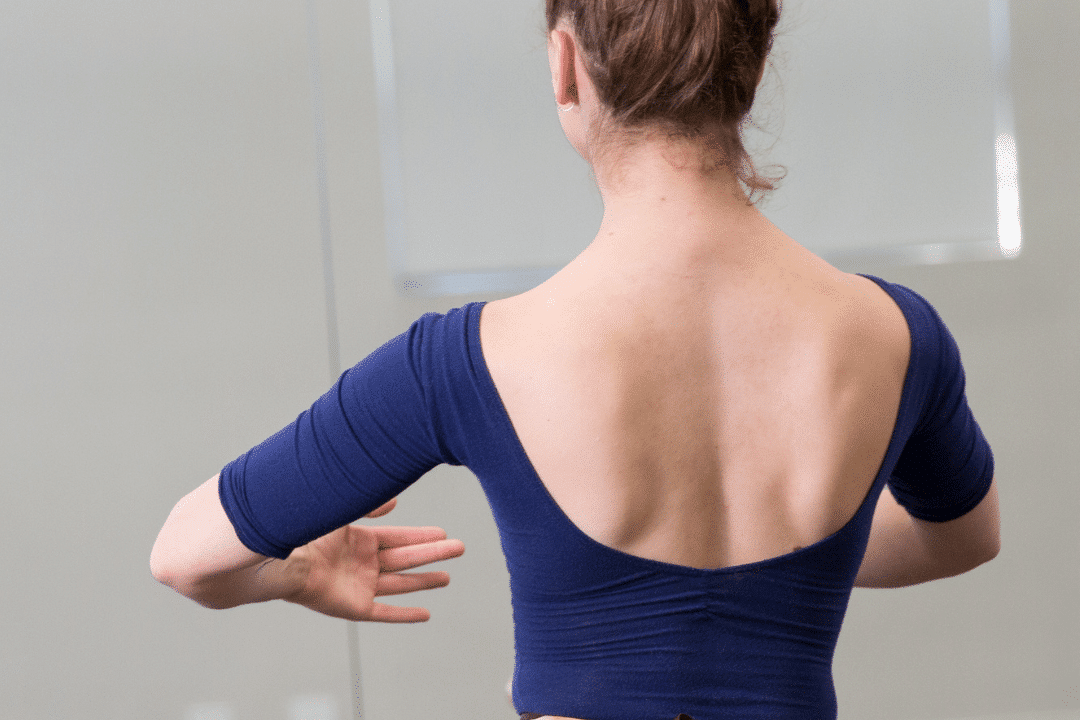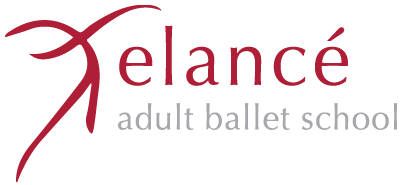
It was my first class after many years, too many years.
As I stood at the barre, I was immersed in the heart-warming familiarity of the ballet studio. However, it was the moment I brought my arms into First Position that I truly felt myself come home.
But what is so special about First Position?
Technically speaking
In my very early years of ballet classes in the Cecchetti method, this position was called “Fifth en avant” (fifth in front). Later, I heard it called the “Gateway” position or just “En Avant”. But the most common name, across Russian/Vaganova, English/RAD, and French methods, is simply “First”.
Names aside, let us indulge a moment in the intricate details of the placement of First Position. The neck is free, the shoulders are relaxed down into the back and the chest is lifted. The arms are supported in front of the body, in a relaxed oval or rounded shape. They are not parallel with the floor but angled gently down from the shoulders. The softly bent elbows are lifted, about level with the rib cage, and held slightly higher than the hands. The hands are held opposite the navel, facing the body, with a delicate tilt upwards so that the palm is directed toward the face. The wrists, hands, and fingers continue the curved shape of the arms, with fingertips pointing toward each other without touching, the thumbs subtly tucked into the palm.
We can ‘feel’ into this position. Even if unfamiliar or unsure, we can find this shape and posture in our own bodies.
There are many visual and illustrative suggestions to assist in finding the correct First Position. Anything from the infamous “hug a beach ball” to the subjective “hold your pregnant belly” and the obscure “create your own hula-hoop”; each of which can be helpful and confusing in equal measure. In my own practice, I like to feel a sense of flow through the curve and a connection with the palm, but that’s similarly ambiguous. Ultimately, our First Position is exactly that… our own! It will be somewhat different for everybody and we should all take the time (and seek our teacher’s help) to discover and get acquainted with our own unique First Position.
Mindful moments
While the technique and placement of First Position are of utmost importance, there is so much more to it than posture alone. Ballet is an emotive artform and the movements and positions involved are instruments of this. However, the concept of dancing from the heart is often overused and under-realised. A position can become more than a position when we feel it, not just in our bodies, but in our minds and hearts. And First Position is a great example of this.
A circle is an infinitely resilient shape, so when we create the circle with our arms in front of us, we are encircling ourselves with strength and compassion; it’s like the most wonderful hug! The soft nature of the curved arm suggests kindness and nurturing, and the gentle slope downwards from shoulder to hand reveals a calmness and grounding. The hands turned to the body direct our attention toward the heart and when we look at our palms, we are introspective and considerate. The fingertips pointing toward each other create a continuous flow of energy and within this circle, we hold a protective space for ourselves.
Again, we can feel into our First Position, this time feeling beyond the form and moving into ourselves.
Bringing the arms to First can be like an emotional barometer. We have an opportunity to touch base with ourselves in First Position and receive insight as to how best to move forward in our class. For example, when mindfully bringing the arms to First, we may note a feeling of care or vulnerability like wanting a hug, a private space, or a protective shield. From this, we know that we need to show compassion for ourselves but also that we can tap into this softness – perhaps an ideal day for fondu and adage. Likewise, when bringing the arms to First, if we can feel a sense of power and strength, then we may feel more able to take risks, and work a bit harder – perhaps a great day for allégro and pirouettes.
In practice
Once we have found and felt our First Position, technically and mindfully, we have an important foundation for our port de bras. A well-placed First Position creates space in the torso, giving freedom to the breath and room to move. It is a posture of transition and stabilisation. First Position is sometimes referred to as the ‘gateway’ position for good reason; although we may begin an enchaînement with our arms in bras bas (preparatory), we always bring them through the “gateway” of First Position in any port de bras and often return to it when balancing and turning. In doing so, we have a wonderful moment to centre ourselves and our bodies before moving on.
Having rediscovered the value and significance of this beautiful position, I can recognise it as an invaluable asset to my physical body and an exquisite opportunity for self-compassion. In coming home to ballet, I am aware that every moment, every position, and every movement, still has something to teach me. And what better place to start, than feeling into First.
By Samantha Patterson
